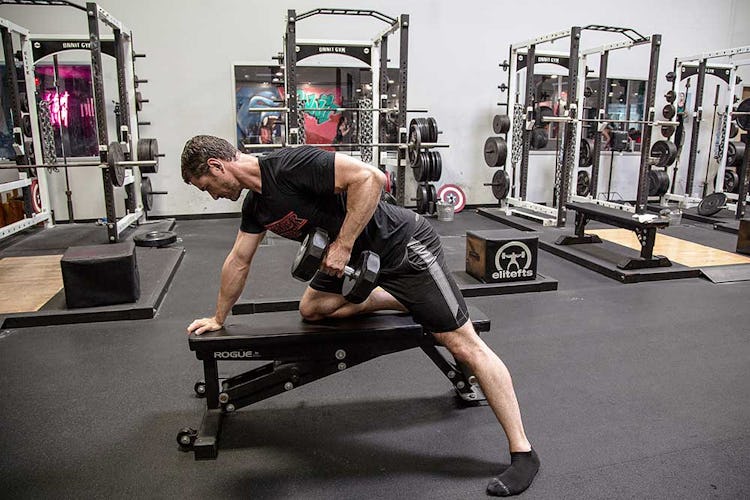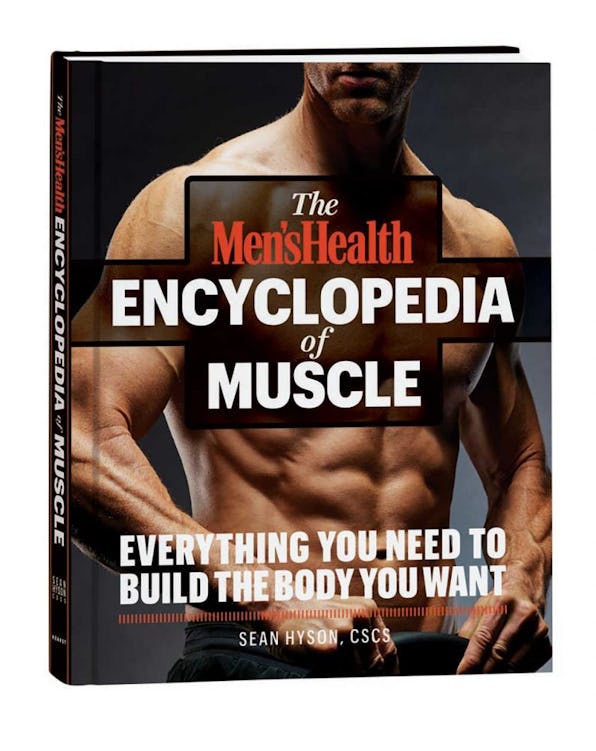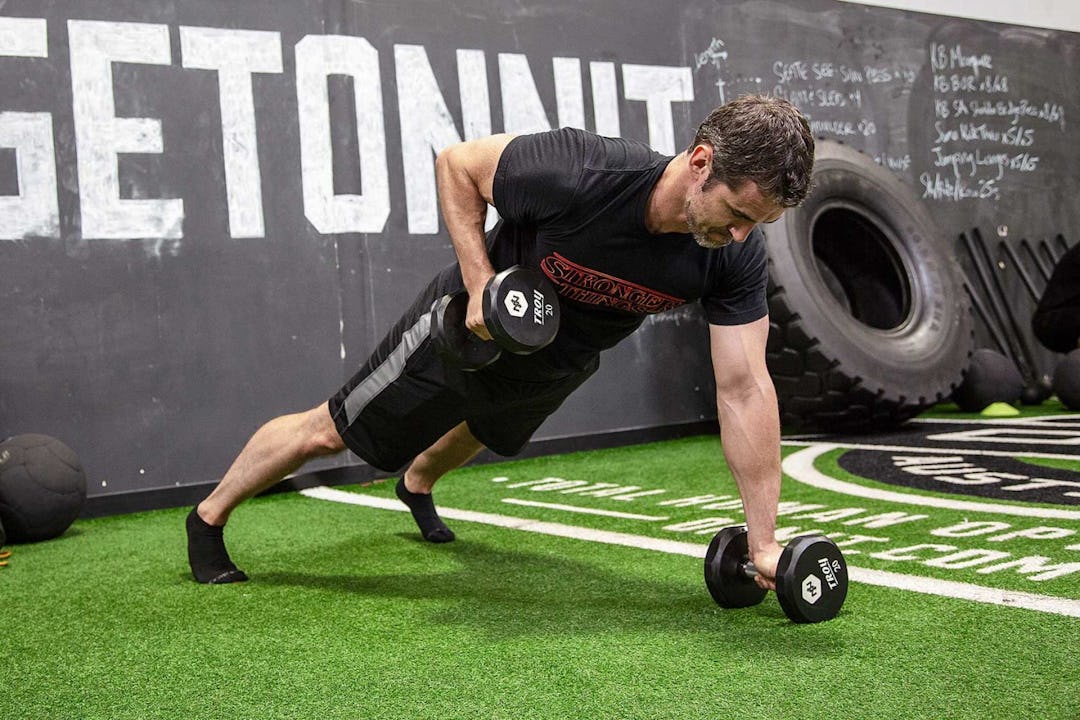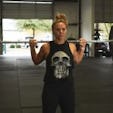Hey there. How ya doin’? How’s that New Year’s Resolution to get in the best shape of your life coming along? We hate to be the bearer of bad news, but if you’re not kicking ass on your fitness goals by now—and even if you are—you’re at high risk for giving up on them any day now. At least that’s what the statistics show.
According to research from the University of Scranton, 30% of us give up on our Resolutions within the first two weeks of the year. Meanwhile, research conducted by Gold’s Gym was a little more optimistic. They found that people tend to fall off the “fitness cliff” by the second week of February in any New Year. That’s the point where new members stop going to the gym, says Gold’s, and regress to their old habits.
When researchers look into why people fail to achieve their fitness goals, a few reasons repeatedly come up. If you made the resolution alone and don’t have friends or other supporters to share it with, your motivation will lag. Not having a plan for your training is another problem, resulting in a lack of focus and direction. Thirdly, some people just succumb to the sheer boredom associated with the monotony of working out.
Using alternating periodization to program your workouts can be the solution to all of these problems.

The Workout That Will Last You All Year
Alternating periodization is a fancy term for planning fluctuations of intensity in your workouts. Put simply, you lift lighter weights for lots of reps for a few weeks, and then go heavier for lower reps for another few weeks. Alternating back and forth between the two training styles yields big muscle and strength gains, and it’s a pattern you can repeat for months on end—or even a year or more—to see continued improvements.
This is a great system for keeping an ambivalent exerciser on task. Alternating periodization is a program. You plan out what you’re going to be doing for weeks (or months) in advance, so your workouts have direction. No more going to the gym, looking at what equipment is open, and putting together a random session on the fly. Now you’ll know exactly how many sets and reps you need to do, and how to build off what you do today in your next workout.
A second advantage of having a program is that you can get someone to follow it with you. If you have a friend who is just as listless about the gym, invite him/her to get on the program with you, so you can share workouts and keep each other motivated. Having each other to be accountable to will help you stay more accountable to the program itself.
Lastly, alternating periodization makes training fun. The specific focus of each session changes every few weeks, so just when you’re getting tired of long sets that make your muscles burn, you can load up the weights and try to set big personal records with short, all-out sets—and vice versa.
The following is an excerpt adapted from The Men’s Health Encyclopedia of Muscle, by Onnit’s Editor-In-Chief, Sean Hyson, C.S.C.S. It includes 56 encyclopedic entries covering virtually every major exercise technique and strategy, plus 40 sample workouts. You can pick up the book HERE.

How To Use Alternating Periodization
Very simple: You perform a few weeks of high-volume, somewhat low-intensity workouts followed by weeks of lower-volume, high-intensity training. During the high-volume phase, you’ll hit your muscles with high reps—sets of, say, 12 to 15—and shorter rest periods. This forces them to recover more quickly and builds work capacity. In the low-volume phase, you focus on strength, taking the reps way down (maybe 4 to 6) to go heavy and increasing the rest periods.
“When you cut that volume, you make huge gains,” says Jason Ferruggia (@jayferruggia on Instagram), a strength coach and host of the Renegade Radio podcast. “And the more drastically you cut it back, the better the gains seem to be.” The main caveat to be aware of is that the longer you stay with one rep range, the more you risk losing the adaptations you made from the previous one.
In other words, too many weeks of doing sets of nothing but 12 reps will make the weights you use for six reps feel extra heavy when you get to that phase, and the reverse is also true. But you can get around this by limiting your training phases to three to six weeks at a time. Ferruggia says frequent changeups are also a good idea from a safety standpoint, as prolonged periods of heavy lifting in the second phase can wreak havoc on your joints.
Another factor is simply boredom—doing the same reps for weeks on end can make some people lose motivation. “I would rotate the phases every three weeks, to keep it more fun for people,” says Ferruggia, “and, I would ramp up the sets.” So, during the high-volume period, you might do three sets for each lift in Week 1, increase it to four sets in Week 2, and then five sets in Week 3. “I might also cut the rest periods from 90 seconds to 75 to 60,” he adds, as the weeks go by. In the low-volume period, you would drop back to three sets, and increase the rest to two minutes.

Note that the exercises in your workouts don’t all need to be done with the same rep range, and probably shouldn’t be. Main lifts, like squats and overhead presses could be done for four to six reps in the low-volume block, but, if you plan on doing accessory exercises like lateral raises and curls, those would need to be done with higher reps for the sake of joint safety (lifts like this aren’t meant to be loaded heavy). The reps can still follow the same pattern, however—so, if you did isolation exercises for 10 to 12 reps in the first phase, you can lower them to 7 to 9 reps in the second.
Long-term, your training can alternate this two-phase system indefinitely. Just keep changing the reps, to avoid burnout. For example, your first four phases can be done as 12 to 15 reps, 4 to 6 reps, 10 to 12 reps, and 3 to 5 reps. That’s at least three months of workouts right there! You should rotate your exercises every phase or two as well (say, after you’ve trained them with both high and low reps), to get some variety in the movements you use to work your muscles.
“I used to use alternating periodization exclusively for years, and it always worked really well,” says Ferruggia. But, for all its effectiveness, the alternating model seems to have gone underground—even among sophisticated lifters like Ferruggia who love to analyze training programs.
The reason may be the popularity of undulating periodization, a system in which you perform different rep ranges each workout every week. “But the advantage I see in alternating over undulating periodization is that you can give your joints a break for a longer period in the high-volume phase,” Ferruggia says. In the end, all forms of periodization are effective, so experiment with each one and see what suits you best. All of these are discussed in the Mens’ Health Encyclopedia of Muscle, available NOW.

)






